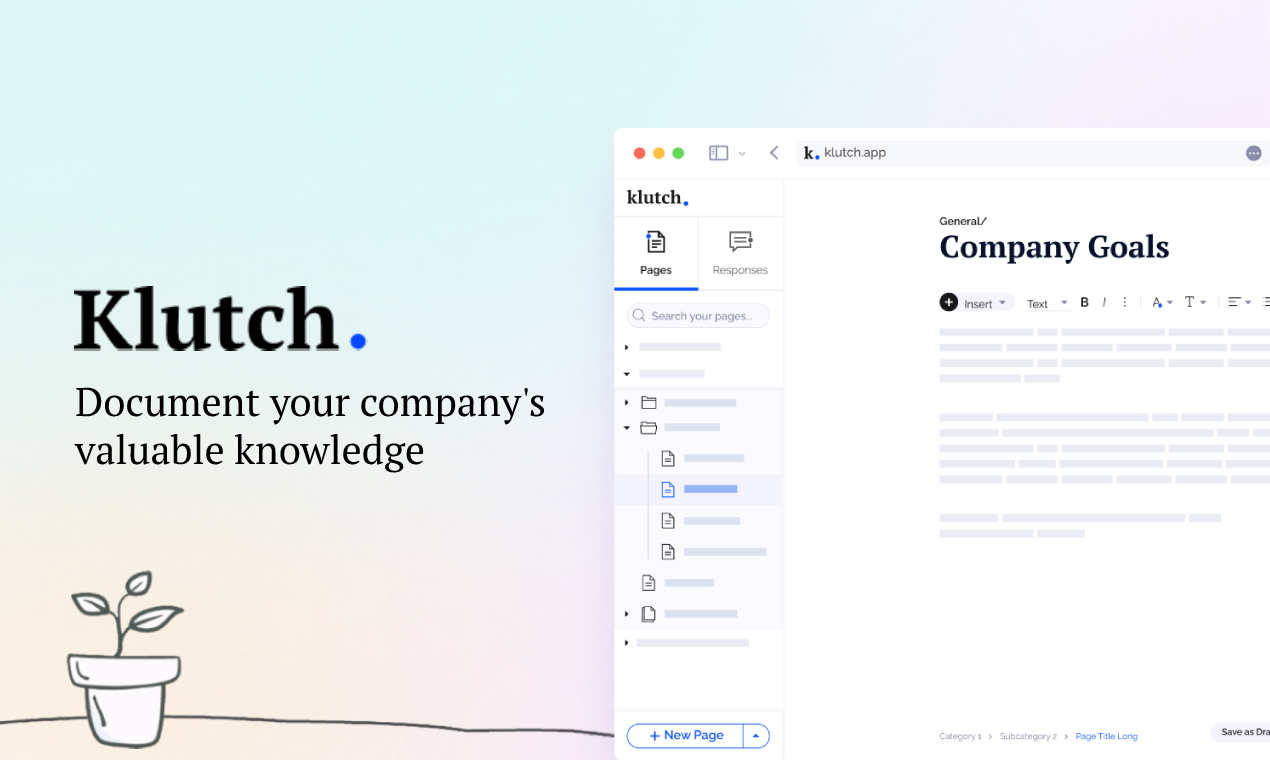In remote teams, there is an accepted lag in communication.
This is called asynchronous communication, meaning that one person sends information and doesn’t expect the recipient to respond immediately. Team members send as much information as they assume the other person might require in each message and vice versa.
This article will explore asynchronous communication and its role in remote work. It will also look at tools such as Klutch knowledge base and others that optimize this process.

What is Asynchronous Communication in Remote Work?
Asynchronous communication is simply an interaction that doesn’t occur in real time.
It is a way for remote workers to organize tasks according to their schedules. Since interaction is not real-time or immediate, workers feel less pressure when they have to complete a job.
Principles of Asynchronous Work
This form of work is based on three main concepts:
- Multiplexing
This refers to breaking jobs into smaller versions that can be executed in parallel. A task doesn’t depend on another before it can be completed.
- Communication
Asynchronous communication promotes good documentation and written procedures.
- Action
In asynchronous work, team members don’t have to wait for a decision maker that delays a task. The multiplexing nature allows team members to pick up other tasks to complete until all components of the initial one are ready.
How Does Asynchronous Communication Work?
Asynchronous work is not complicated. Further explanation helps you realize that it’s something you do all the time through text and voice messages, as well as video recordings. You just didn’t know that was it.

The concept describes communication between two people who are unlikely to be in the same place simultaneously. This could refer to an office space or the internet.
You use asynchronous messaging when communicating with a family member or friend on vacation.
Knowing they may not be online when you are, you send them messages with as much context as possible. Their replies also follow the same format knowing you may not be online when they are. This concept is translated into companies mainly to promote remote work.
When communicating in an async working environment, you should ask yourself the following:
- Is this the best format for the type of message I am sending?
- Is there anything I need to clarify in the message for the one receiving it?
- Are my words concise?
- Is there anything wrong with the tone of my message?
- Is there any resource I have to send or steps I have to list so that the conversation is not delayed?
- Is the interaction getting documented or recorded for future reference?
Thinking ahead like this quickens communication between team members and increases productivity.
It takes a while to get the hang of such thoughtful communication, but it is worth it. You learn to collaborate better and build more efficient teams when you master asynchronous communication.
Benefits of Asynchronous Work
Autonomy
Companies that use the asynchronous concept in their operations give workers the freedom to create schedules that best fit them. The idea is to measure your output, not the number of hours you put in. You can deliver the results whenever you want to, as long as it falls within the project timelines.
In such an environment, you can decide to do whatever you want, whenever, as long as you get the results needed.
When these workers were compared to those in less autonomous systems, they showed more loyalty and produced results of higher quality.
This is why asynchronous work promotes remote work. It allows team members to work from places where they feel most productive and happy.
Increases Productivity
Most employers and managers don’t realize that a lot of working time is spent on preparation and deliberation instead of production. Asynchronous work means team members don’t have to wait for other members before taking action on a problem.
An example is when a decision maker on a project is not online at an agreed meeting time. Workers can spend time completing other tasks instead of sitting around waiting for this person. The goal is to use the time available efficiently.
Someone who needs groceries at home can spend that waiting period shopping at the supermarket. This means the time they set aside for shopping later is now free. The meeting can take place then, or the worker can just complete another task if it still doesn’t.
More Inclusive
Asynchronous work removes challenges such as a difference in time zones. This system doesn’t require that all team members are available within specific hours in a single time zone. Tasks and communication protocols are set so that employees in vastly different time zones can still collaborate without hindrance.
An organization can therefore employ people regardless of their location. If they have the skills and tools, they can join the team. This encourages inclusivity within the company and is one of the best benefits of asynchronous work. Companies that use this system have team members from all parts of the world collaborating on their projects.

Supports Mental Health
A lot of stress at work comes from expecting employees to respond immediately to inquiries. The concept of “thinking on your feet” has created a toxic working environment even for the most intelligent people.
Asynchronous work understands that all team members of a company can’t be readily available for several reasons. Since there is no expectation for you to provide answers to problems readily, you become less tense. You can take time to think through problems, do proper research, and provide the best solutions in good time.
This working environment is excellent for your mental health. You don’t have to prove how smart you are to anyone. Nobody is concerned with how quickly you provided a solution. The important thing is that you gave one, and the project can move on from there.
Asynchronous work focuses on solutions, not creating a competitive environment between team members. This reduces mental pressure on workers.
Encourages Intentionality
One of the issues with synchronous communication is the idea that everything has to be done within deadlines. Things that should be well processed get half-baked assessments because team members want to complete them before the working day ends. The pressure to show results within a set working period only reduces the quality of solutions.
In asynchronous companies, nothing is urgent. This allows workers to process issues thoroughly and not in real time. Not expecting an immediate response also encourages you to plan.
You translate everything into documents and checklists that other team members look at and complete when available. It makes everyone intentional since “team member A was not available” is not an excuse for not being productive.
Bridges the Knowledge Gap
Synchronous companies make decisions in meetings through a lot of impulsive thought processes. Activity during these discussions makes it difficult for processes and context to be documented. New hires in these organizations must ask about every process and its reason.
In an asynchronous company, communication among team members is well-documented.
Assuming your co-worker is asleep, you list everything you need from them with as much context as possible. You do this to prevent them from returning to seek clarification. This type of interaction between team members creates detailed documents of problems and solutions in the company.
New employees can just search through archives to find how some issues were solved without having to bother others. This enables them to quickly bridge the knowledge gap between themselves and other team members.
Tools for Asynchronous Working
Setting up a thriving asynchronous environment depends on how team members communicate. Managers should be careful with tool selection as the goal is to reduce communication channels as much as possible.
Google Docs, Canva, Zoom, and many other cloud tools help promote asynchronous collaboration. The only issue with these is that they are all specialized tools and tend to split communication on different platforms. This is where asynchronous communication tools such as Klutch come into play.
Klutch knowledge management is also a competitive one. It lets you create an internal knowledge base for your team so they can access essential information anytime, anywhere, using any device. This can help them get things done without disturbing other team members.
Klutch also has a team collaborative feature that works in real-time. With Klutch, you can manage your pages and canned responses. The latter can help your sales team get the answers they need to specific questions to better respond to customer queries.

They help you align all forms of communication in one space. You can record and retrieve documents, interactions, and decisions with ease.
Conclusion
There has been a significant rise in remote teams since the onset of Covid-19. Having the most efficient communication strategies for such a workforce has become necessary. This is the time to create an asynchronous working environment to ensure that your company’s operations are still at a high level.
It will enable your team to spend more time processing problems. The reduced tension will improve their mental health and make them happier. Best of all, one person cannot drag the whole team behind since members become more action-focused.
Use the best asynchronous tools to simplify the work process and documentation. Check out Klutch if you need a knowledge base that can store all your company records and helps your team access important data anytime, anywhere.



